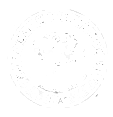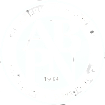A stroke happens when blood flow to a part of the brain stops. A stroke is sometimes called a “brain attack.”
Causes, incidence, and risk factors
If blood flow is stopped for longer than a few seconds, the brain cannot get blood and oxygen. Brain cells can die, causing permanent damage.
There are two major types of stroke: ischemic stroke and hemorrhagic stroke.
Ischemic stroke occurs when a blood vessel that supplies blood to the brain is blocked by a blood clot. This may happen in two ways:- A clot may form in an artery that is already very narrow. This is called a thrombotic stroke.
- A clot may break off from another place in the blood vessels of the brain, or from some other part of the body, and travel up to the brain. This is called cerebral embolism, or an embolic stroke.
Ischemic strokes may be caused by clogged arteries. Fat, cholesterol, and other substances collect on the artery walls, forming a sticky substance called plaque.
A hemorrhagic stroke occurs when a blood vessel in part of the brain becomes weak and bursts open, causing blood to leak into the brain. Some people have defects in the blood vessels of the brain that make this more likely.
STROKE RISK FACTORSHigh blood pressure is the number one risk factor for strokes. The other major risk factors are:
- Atrial fibrillation
- Diabetes
- Family history of stroke
- High cholesterol
- Increasing age, especially after age 55
- Race (black people are more likely to die of a stroke)
- People who have heart disease or poor blood flow in their legs caused by narrowed arteries are also more likely to have a stroke.
- Being overweight or obese
- Drinking heavily
- Eating too much fat or salt
- Smoking
- Taking cocaine and other illegal drugs
- Birth control pills can increase the chances of having blood clots. The risk is highest in woman who smoke and are older than 35.
Symptoms
The symptoms of stroke depend on what part of the brain is damaged. In some cases, a person may not know that he or she has had a stroke.
Symptoms usually develop suddenly and without warning. Or, symptoms may occur on and off for the first day or two. Symptoms are usually most severe when the stroke first happens, but they may slowly get worse.
A headache may occur, especially if the stroke is caused by bleeding in the brain. The headache:- Starts suddenly and may be severe
- Occurs when you are lying flat
- Wakes you up from sleep
- Gets worse when you change positions or when you bend, strain, or cough
Symptoms may include:
- Change in alertness (including sleepiness, unconsciousness, and coma)
- Changes in hearing
- Changes in taste
- Changes that affect touch and the ability to feel pain, pressure, or different temperatures
- Clumsiness
- Confusion or loss of memory
- Difficulty swallowing
- Difficulty writing or reading
- Dizziness or abnormal feeling of movement (vertigo)
- Lack of control over the bladder or bowels
- Loss of balance
- Loss of coordination
- Muscle weakness in the face, arm, or leg (usually just on one side)
- Numbness or tingling on one side of the body
- Personality, mood, or emotional changes
- Problems with eyesight, including decreased vision, double vision, or total loss of vision
- Trouble speaking or understanding others who are speaking
- Trouble walking


 845-454-6491 (FAX)
845-454-6491 (FAX)





